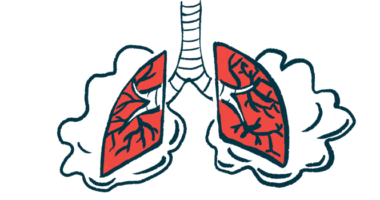Case report: Boy, 3, has combination of CFTR mutations, no CF symptoms
Challenge of predicting outcomes in CF shown in study

A 3-year-old boy who carries a new combination of two mutations in the CFTR gene, but with no clinical signs of cystic fibrosis (CF), was described by researchers in a case report.
“The case presented has no clinical symptoms so far and doesn’t meet the criteria for a CF diagnosis, despite carrying a mutation combination that was predicted to cause CF,” the researchers wrote.
The case underscores the challenges of predicting outcomes in CF, especially with rarer mutations. “Caution is needed when interpreting prenatal genetic results,” the researchers wrote in “Clinical Course of a Child With Cystic Fibrosis and the Genotype F508del/CFTRdup1_11: A Case Report,” which was published in Cureus.
CF is caused by CFTR gene mutations, which impair or stops production of CFTR, a protein responsible for controlling the flow of chloride ions into and out of cells. This malfunction causes thick mucus to accumulate in a number of organs, including the lungs and the pancreas, along with salty sweat. Mucus building up in the lungs promotes lung infections, while, in the pancreas, it blocks the release of enzymes needed to digest food, particularly fats, resulting in pancreatic insufficiency. This can lead to nutritional deficiencies and impaired growth.
More than 2,000 mutations have been described in the CFTR gene, but not all are disease-causing. The most common mutation is called F508del.
To develop CF, a person must inherit two disease-causing mutations from their parents. CF is often screened in prenatal genetic tests, but the correlation between specific CFTR mutations and clinical presentations is not easy to predict.
No symptoms despite CFTR mutations
Here, researchers in Greece write about a boy with CF who harbors the F508del mutation in one CFTR gene copy and another mutation known as CFTRdup1_11 in the other. F508del results in abnormal folding and the early destruction of the CFTR protein. CFTRdup1_11 represents a duplication of a small part of the gene.
Prenatal screening test revealed the mother carried the F508del mutation. The father was subsequently found to carry the CFTRdup1_11 defect. Following an amniocentesis, which collects amniotic fluid from the womb, a genetic test confirmed the fetus was positive for the F508del/CFTRdup1_11 combination, which isn’t described in available CF databases. Smaller duplications have been reported in the same region of the CFTR gene in combination with F508del, however, so computer models helped predict the baby would have CF with pancreatic insufficiency.
The parents were informed of the CF-related mutations in genetic counseling and decided to continue the pregnancy. The baby was born at term and a genetic analysis confirmed them.
The period after birth was uneventful. A blood sample collected shortly after the baby was born was tested for levels of immunoreactive trypsinogen, a protein typically elevated in the blood of people with CF. The test was negative. The infant continued to grow and develop normally, and his ability to absorb food was also normal.
At the time the study concluded, the child was being tested nearly every three months for airway infections. He did test positive for Staphylococcus aureus, a bacteria commonly present in the airways of people with CF, but was successfully treated with a combination of antibiotics. No worrisome microbes have been detected in his airways ever since and he hasn’t been hospitalized.
A sweat test, a standard for diagnosing CF, was conducted at age 3. Similar to results at two weeks of age, the results were borderline, meaning just below the threshold for a CF diagnosis.
The researchers described the case as one that “adds to the pool of data indicating limitations to [computer] models, as clinical phenotype [presentation] can greatly differ from predicted.”








